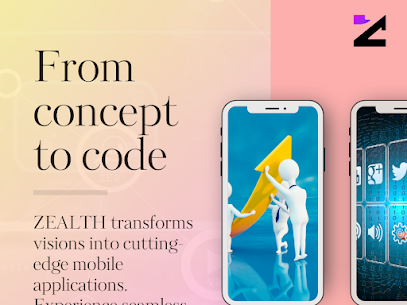
Introduction:
In the ever-evolving landscape of mobile app development, Flutter has emerged as a powerful and versatile framework for creating cross-platform applications.
In this comprehensive guide, we’ll explore 15 essential Flutter development tips and tricks, emphasizing the expertise of a prominent Mobile App Development Company in Noida.
Flutter’s flexibility, efficiency, and hot-reload feature have made it a favorite among developers aiming to deliver seamless user experiences.
As the demand for Flutter development continues to rise, it’s crucial for developers to stay abreast of the latest tips and tricks to optimize their workflow.
- Utilize Hot Reload:
One of Flutter’s standout features is Hot Reload, allowing developers to instantly view the effects of code changes without restarting the entire application. This accelerates the development process, enabling quick iterations and efficient debugging. - Understanding Widget Tree:
Mastering the widget tree is fundamental to effective Flutter development. Flutter’s architecture is based on widgets, and understanding how these widgets nest and interact is crucial for building robust and efficient UIs. - Responsive Design with MediaQuery:
To ensure your Flutter app looks polished across various devices, leverage MediaQuery to adapt the UI based on screen size. This responsive design approach guarantees a positive user experience on a range of devices. - Effective State Management:
Choose the right state management solution for your project. Whether it’s Provider, Bloc, Riverpod, or another option, efficient state management is essential for maintaining a scalable and maintainable codebase. - Dart DevTools for Debugging:
Dart DevTools is a powerful suite of debugging tools accessible through your browser. It provides valuable insights into your app’s performance, memory usage, and facilitates effective debugging – an indispensable resource for Flutter developers. - Optimizing Build Sizes:
Keep an eye on your app’s build sizes to ensure optimal performance. Flutter allows customization of app size through techniques like tree shaking and code splitting, crucial for delivering a smooth user experience. - Customize ThemeData for Consistent Styling:
Define a ThemeData object to maintain consistent styling throughout your app. This ensures a cohesive visual identity and simplifies the process of making global design changes, creating a seamless user experience. - Explore Flutter Packages:
Leverage Flutter’s rich ecosystem of packages to streamline your development process. Many pre-built packages can save time and offer solutions for common functionalities, enhancing productivity. - Effective Use of Keys:
Understand and use keys judiciously. Keys help Flutter identify and differentiate between widgets, especially in cases where widgets are dynamically generated or reordered. This is essential for maintaining a robust and predictable UI. - Internationalization and Localization:
Plan for internationalization and localization from the project’s inception. Flutter provides robust support for adapting your app to different languages and regions, offering a globalized user experience, as suggested by a Mobile App Development Company in Noida. - Flutter Widgets Inspector:
Leverage the Flutter Widgets Inspector to visualize the widget tree during runtime. This powerful debugging tool provides valuable insights into your UI’s structure, aiding in effective troubleshooting. - Implementing Animations:
Master Flutter’s animation classes for creating engaging and smooth user interfaces. The AnimatedContainer, AnimatedOpacity, and AnimatedBuilder classes are powerful tools to elevate the visual appeal of your app. - Optimizing Images with Pubspec.yaml:
Efficiently manage image assets by optimizing them through the Pubspec.yaml file. Configuring images for efficient compression ensures they do not unnecessarily inflate your app’s size, optimizing performance. - Handling Orientation Changes:
Create a responsive layout that seamlessly adapts to both portrait and landscape orientations. This ensures a consistent and enjoyable user experience across different device orientations, aligning with best practices from a top Mobile App Development Company in Noida. - Explore Flutter Web:
Extend your Flutter skills to web development. Flutter’s web support allows you to create applications that run on both desktop and mobile browsers, expanding the reach of your projects.
Conclusion:
By incorporating these 15 Flutter development tips and tricks into your workflow, you’ll be better equipped to create high-quality, performant, and visually appealing applications.
Staying informed about best practices, exploring new features, and considering the expertise of a Mobile App Development Company in Noida can empower you to navigate the complexities of Flutter development successfully.
As Flutter continues to evolve, the knowledge and implementation of these tips will undoubtedly contribute to your success as a Flutter developer. Happy coding!




